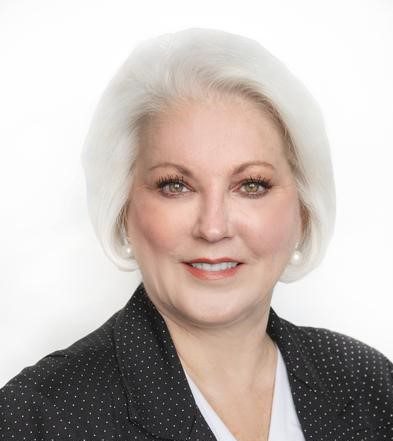In the law of professional negligence, the standard of care is the benchmark by which others assess a veterinarian’s competence. To be within the standard of care, veterinarians must perform their duties with an average degree of skill, care and diligence exercised by colleagues practicing under the same or similar circumstances. Unfortunately, this is a general rule and not always helpful when one is trying to determine whether or not to do something in a given situation. For example, when is it or isn’t it necessary to refer a patient?
In general, compared to other professionals, veterinarians are minimally regulated. Aside from the state board of examiners, DEA and OSHA, few governmental agencies interfere with how we practice medicine. This is a good thing, because veterinarians can still exercise independent judgment. It is a bad thing, however, because it is not clear as to what and what is not the standard of practice. For this reason, authors of this manuscript have compiled a set of veterinary care standards for various exotic species. We believe that it is better such standards are articulated and published “within” and “for” the industry, rather than waiting around and having the lawyers and courts determine the standards one by one, each at the expense of a veterinarian’s career.
There are primarily two areas of law that regulate the conduct of veterinarians and help ensure that veterinarians act prudently and reasonably in their dealings with clients and their animals. The first is the civil court system that adjudicates claims made by clients who allege that their veterinarians have acted negligently. The second is the state board of examiners which is an administrative office charged with enforcing a state’s veterinary practice act which sets forth laws with which veterinarians must comply to obtain and maintain their veterinary licenses. In performing their daily clinical duties, veterinarians should be cognizant of these two areas of law since they represent the two principle avenues by which clients may have complaints addressed.
Receiving letters from the state board of examiners and or a disgruntled client’s attorney can be very distressing, causing veterinarians to respond impulsively and not always in their best interests. This is especially the case with veterinarians who have been practicing for only a few years since they are not likely ever to have been named in a lawsuit or reprimanded by a regulatory agency. It is important for veterinarians to realize that how they initially respond to such allegations can have a significant impact on the outcome. For this reason it behooves us to become knowledgeable about the processes by which state boards and the courts adjudicate such allegations. The following scenario illustrates how these procedures work in real life.
Martinique’s Case
Mrs. Bridges brings in Martinique, her 2 year-old female iguana, to Dr. Steel, a small animal practitioner who prides himself in being knowledgeable about exotics as he is a member of the Association of Avian Veterinarians. Mrs. Bridges informs Dr. Steel that Martinique has not eaten for 2 weeks and after performing a physical examination, Dr. Steel diagnoses “Egg Binding”, a common condition in both birds and reptiles. Without advising Mrs. Bridges of his limited experience with reptiles, nor offering her a referral to a colleague who has more experience, Dr. Steel obtains Mrs. Bridges’ consent to perform a spay surgery on Martinique. Dr. Steel has performed many spay surgeries on birds to treat “Egg Binding”, and performs the same surgical procedure on Martinique whereby he removes the shell glands without removing the ovaries. Martinique is sent home and recovers well from surgery after 3 weeks of antibiotics and hand feeding.
Next spring, Martinique goes off her food again, but this time, she is lethargic and has a markedly swollen abdomen. Mrs. Bridges is concerned this is a recurrence of the same problem and brings Martinique to a new vet in town, who advertises herself as an exotic veterinarian with expertise in reptiles, birds and pocket pets. Dr. Zoo examines Martinique, performs an x-ray and ultrasound, and diagnoses “Egg Binding.” Mrs. Bridges is puzzled and frustrated as to why Martinique has the exact same condition, when the surgery performed by Dr. Steel, a year ago, should have permanently fixed the problem. Dr. Zoo, also is confused, and with Mrs. Bridges’ consent obtains a copy of Martinique’s medical records and contacts Dr. Steel.
The medical records are vague at best. The only notation relative to the surgery is “spayed, surgery routine, recovery uneventful.” Dr. Steel confirms the information in the medical records and informs Dr. Zoo, in a patronizing manner, that his experience is that reptiles are just like birds, and their shell glands can be removed without removing their ovaries. In a defensive tone, he tells her that he has been performing these procedures on reptiles long before she was ever admitted to veterinary school.
Dr. Zoo responds to Dr. Steel by informing him of her residency training in exotics, experiences working at various zoos around the country, and tells him that reptiles are not at all like birds and must have their ovaries removed. She further explains that since the ovaries were not removed during the first surgery, Martinique has re-presented with the same symptoms because she has ovulated eggs, which are now in the coelomic cavity. In fact, she tells Dr. Steel that it is likely that Martinique was just pregnant a year ago and did not have “Egg Binding” condition as he had diagnosed and due to his misdiagnosis, Martinique will need a second surgery.
After speaking with Dr. Steel, Dr. Zoo informs Mrs. Bridges that Martinique will need a second surgery and discusses the procedure and fees involved. Mrs. Bridges, who is angry that she has to pay a second time for the exact same procedure, asks Dr. Zoo to discount her fees. While sympathetic and understanding, Dr. Zoo explains to Mrs. Bridges that a discount is not possible. Frustrated, Mrs. Bridges leaves Dr. Zoo’s hospital with Martinique. Later that night Martinique became weak, started mouth breathing and was unresponsive to touch. Mrs. Bridges rushed her pet to the local emergency clinic where the doctor on duty performed an emergency exploratory. Sadly, Martinique died during the recovery.
Three months later, Dr. Steel receives two letters; one from the State Veterinary Board of Examiners and another from Mrs. Bridges’ attorney. The state board letter requests Dr. Steel to respond to Mrs. Bridges’ assertions that Dr. Steel was negligent in (a) failing to inform her that the he was not experienced in treating reptiles; (b) failing to offer a referral to a veterinarian who was qualified and experienced in treating reptiles; (c) misdiagnosing Martinique’s condition; (d) performing a surgical procedure below the standard of care; and (e) failure to maintain appropriate medical records. The correspondence from Mrs. Bridges’ attorney includes a copy of a complaint filed with the state court alleging malpractice and a demand for $100,000, for economic and emotional distress damages.
What should Dr. Steel do?
Responding to Allegations of Professional Malpractice
How veterinarians address such accusations will in part depend on whether the allegations are in the form of a lawsuit, state board complaint, or both. Regardless of the form in which the allegation is made, the first step veterinarians should take is to carefully read the complaint and determine what is being requested of them and in what time frame. Once this information has been assimilated, they should gather the pertinent medical records and any other documentation relating to the services in question and write down in chronological order their recollection of the events.
In this case, the complaints allege that Dr. Steel performed a procedure for which he had insufficient knowledge, failed to refer the case and had poor medical records. The facts indicate that Dr. Steel examined Martinique, made a diagnosis and performed the spay to treat the “Egg Binding.” Dr. Steel should carefully review the medical records to corroborate his recollection of the events. Unfortunately in this case, because the documentation is poor, it will be a scenario of Dr. Steel’s word against Mrs. Bridges’. For example, it will be difficult for Dr. Steel to claim that he informed Mrs. Bridges of alternatives, including a referral, as there is no such notation in the records. Since Dr. Steel has a legal obligation to maintain medical records, the fact that he hasn’t will imply that he also was careless with his medicine. As he reviews the records, Dr. Steel should write down the events that led to Mrs. Bridges’ complaint. Most veterinarians will find this helpful since it will refresh their memories, help them develop a consistent “story” as to what happened, and provide a draft from which to develop a written response.
So as not to compromise his defense in the lawsuit, Dr. Steel should immediately upon receiving the complaint, contact his professional liability insurance carrier and ask for advice. However, if Dr. Steel suspected earlier that Mrs. Bridges was likely to pursue legal action, he should have contacted his insurance carrier at that time. Insurance carriers may differ in how they handle negligence actions, but usually require the defendant to fill out a claims form in which the veterinarian describes the circumstances that led to the claim. A claims representative then reviews the facts, makes a recommendation as to a course of action and may assign an attorney to the case if the complaint cannot be settled quickly. In this case, if Mrs. Bridges is offered a settlement and rejects it, it is likely an attorney would be assigned to defend Dr. Steel since in this case it appears that Dr. Steel’s care was substandard in several respects.
In dealing with the letter from the state board, Dr. Steel should be aware that he will most likely be defending his conduct at his own expense, since professional liability insurance carriers generally do not provide coverage for state board actions (exception: AVMA-PLIT now offers a limited policy insuring against state board actions). While Dr. Steel may respond on his own, it is usually advisable for him to obtain legal advice as to how he should respond to the allegation(s) and at the very least have an attorney review his letter. In drafting his response, Dr. Steel should not underestimate the time and effort it will take to address all the issues in the complaint, in an organized and articulate manner. Responses that are, disorganized, incomplete and difficult to follow, often lead to further investigation by the board as opposed to an early dismissal of the charges. Additionally, Dr. Steel may find it helpful to consult with other veterinarians to determine whether they use inform their clients of alternatives and/or “wing it” on exotic patients. This will assist Dr. Steel in determining whether he acted within the standard of care and provide an indication as to his liability.
Negligence
The burning issues for Dr. Steel of course, are whether he was negligent in failing to (a) refer Martinique, (b) remove the ovaries and, (c) maintain proper medical records. Our courts and juries decide negligence on a case by case basis in light of the specific facts and circumstances of each situation, but, veterinarians should be aware of a few general principles. First and foremost, it is important to note that a veterinarian can be found negligent even if he or she did not intend to cause harm. Simply put, “I didn’t mean to” is no defense to “you should have known better”. A simple mistake can lead to liability.
Secondly, veterinarians can be found negligent even if the rest of their colleagues would have acted in the exact same way. Judges can determine that the entire industry is at fault if it is in the public’s interest. Judge Leonard Hand, a famous judge once wrote in his opinion “[c]ourts must in the end say what is required; there are precautions so imperative that even their universal disregard will not excuse their omission.”[1] Hence it is a false security to rely on what the rest of your colleagues are doing.
To recover damages from a veterinarian based on negligence, a client must prove four elements by a preponderance of the evidence, meaning it is more likely then not that the veterinarian erred:
Duty of Care. Clients must show that their veterinarians “owed” them a duty of care to provide veterinary services of a certain standard. This element is easy to prove, because courts almost always find that once a veterinarian has agreed to provide veterinary services, the veterinarian also has assumed the legal duty to take reasonable care in providing such services. In our scenario, Dr. Steel clearly owed Mrs. Bridges a duty to take reasonable care in providing veterinary services to Martinique.
Breach of Standard of Care. A duty to provide services within the standard of care is breached when veterinarians fail to meet the standard of care as established by the veterinary profession, that is, when they fail to act with the level of skill and learning commonly possessed by members of the profession in good standing. Mrs. Bridges probably will be able to prove breach of duty if her attorney can show that veterinarians routinely remove ovaries when spaying iguanas. Conversely, Dr. Steel will attempt to establish that he did not breach his duty of care, by showing that most general practitioners do not remove the ovaries and the patients do just fine. It is at this stage that expert witnesses are hired to testify as to what is the standard in the case at issue.
Proximate Cause. Clients must then prove that the veterinarian’s failure to provide services within the standard of care “proximately” or “closely” caused the harm suffered by the clients. If the harm suffered by the client is not a result of the veterinarian’s actions or omissions, it would be unfair to hold the veterinarian responsible. In our case, it is clear that Martinique’s death was caused by Dr. Steel’s initially performing the incorrect surgical procedure. Suppose, however, that Mrs. Bridges is suing Dr. Steel because Martinique died of renal failure a month after spay procedure. It will be a lot harder to prove that Martinique’s death resulted from anything Dr. Steel did or failed to do during the procedure.
Damages. Even after they have proved negligence, clients also must establish that they suffered harm resulting from such negligence. Since animals are considered as property under the law and most state courts do not recognize loss of companionship, this harm is usually in the form of an economic loss. As a result veterinary malpractice awards are usually much lower than in human malpractice cases and clients usually only recover the fair market value of the animal, costs incurred for veterinary care, and loss of income or profits in cases where the use of the animal is lost. However, we are seeing more and more states entertain the possibility of awarding non-economic damages and this is likely to increase the scrutiny with which standards of care are evaluated as well as the number of lawsuits filed against veterinarians.
Responding to Client Complaints
Veterinarians often can avoid receiving letters from clients’ attorneys and state boards by addressing client complaints long before client dissatisfaction leads to legal recourse. Clients often resort to litigation and or state board action when they believe their veterinarian either acted negligently or failed to respond appropriately to their concerns. When faced with a client complaint, veterinarians should consider the following:
- Listen to the client.
- Clients who have complaints are often angry and need the opportunity to “vent”.
- Veterinarians should show their clients that they are taking the matter seriously by listening carefully to what their clients have to say and taking notes of the conversation.
- Do not interrupt the clients since this will only anger them further and likely interfere with a clear understanding of the facts.
- Remain calm and objective.
- Avoid becoming defensive and emotional, since this may inadvertently reinforce the client’s belief that the veterinarian acted inappropriately with respect to the care of the client’s pet.
- A client’s criticism of a veterinarian’s actions, even when fully justified, does not necessarily mean that any negligence occurred. Veterinary medicine is an imperfect science and veterinarians are not omnipotent.
- Communicate, communicate, communicate.
- Many lawsuits are filed because veterinarians fail to adequately communicate with their clients. Often the client does not fully understand the diagnosis or proposed treatment and has unrealistic expectations as to the veterinarian’s services and the respective outcome.
- Veterinarians can enhance communication and reduce potential misunderstandings by 1) obtaining informed consents, 2) providing fee estimates, 3) encouraging questions, and 4) providing handouts explaining the contemplated services.
- Veterinarians should use “plain English” when communicating to clients since medical jargon may not only confuse clients but also intimidate them, making them reluctant to ask important questions.
- Show sympathy and concern.
- Clients whose pets have died are often emotionally distraught and under certain circumstances may seek to blame someone, sometimes their veterinarian, for their pet’s death. Veterinarians who are compassionate and attempt to comfort their clients are more likely to diffuse their client’s perception that the veterinarian should be held accountable for their pets death.
- Veterinarians should not hesitate to recommend grief counseling for clients who appear to have difficulty coping with the loss of their pet. Several veterinary schools have such hotlines, including, the University of California at Davis, University of Florida and Colorado State University.
- Coach the staff.
- Staff members can help diffuse client complaints and should be coached in what to do and say, if anything, when a client complains.
- The staff should remain professional at all times and avoid “offensive – defensive” discussions with clients who may be less intimidated by staff members and therefore more hostile to the staff as compared to the veterinarian.
- Do not admit fault or offer a settlement.
- Veterinarians should avoid making apologetic statements or excuses and should not admit fault, since this would compromise their case in the event a lawsuit was later filed. Veterinarians with only a few years of experience are more likely to feel guilty and accountable for bad outcomes, even though there was no negligence. Remember that “feeling guilty” is NOT the same thing as “being guilty.”
- Veterinarians should not offer to settle a malpractice charge or agree to any settlement offered by the client without first contacting their insurance carrier and attorney since it may be interpreted as an admission of fault, thereby prejudicing their case. Under certain circumstances it may be appropriate to reduce the client’s bill in an attempt to amicably and expeditiously resolve a dispute, but without admitting liability.
Avoiding Client Complaints
Just as an ounce of prevention is worth a pound of cure, the best practice to avoid being dragged into a lawsuit or state board investigation is to take measures to avoid client complaints. Even if successful, Dr. Steel will spend a lot of time, effort and money, defending himself in court and before the state board. In retrospect, it would have been far less costly and burdensome if Dr. Steel had informed Mrs. Bridges that he had limited experience with reptiles and Martinique should be referred to an exotic veterinarian with expertise in treating reptiles—at a minimum Dr. Steel should have done his research before performing surgery.
Veterinarians will save themselves a lot of grief if they periodically evaluate their practices to identify areas where preventive measures and procedures will help avoid complaints before they start. Additionally, veterinarians should regularly consult with the staff, their colleagues and perhaps even their insurance carrier to ensure that they are aware of the latest preventive measures adopted by other practitioners. Keeping abreast of developments in the legal liability field should be an integral part of any veterinarian’s continuing professional education. Because people are people, there is no way to prevent client complaints entirely. But in this area like many others, ignorance is dangerous and a preventive attitude is the best approach.
Conclusion
Being accused of malpractice can be a disconcerting experience for any veterinarian, but especially for associates who have been in practice for only a few years. These allegations can come in the form of a civil law suit or state board action and require veterinarians’ immediate attention so as not to compromise their defense. Preparing a defense against such allegations is facilitated by having knowledge of the law of negligence and an understanding of the adjudicatory process. Nonetheless, the best defense lies in addressing client complaints when they first arise by using honed listening and communication skills, keeping abreast of the standard of care within the industry and adopting preventative measures.
[1] The T.J. Hooper [60 F.2d 737 (2d Cir. 1932)]









